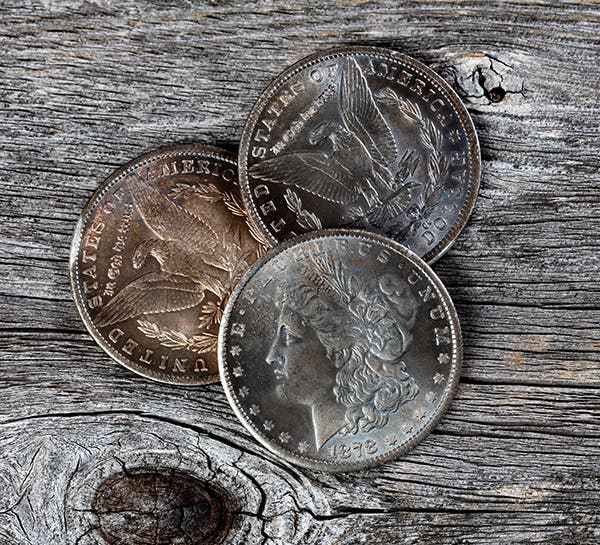1982-P half looks like it can win the race
Sometimes you just get a hunch about a coin.
Sometimes you just get a hunch about a coin. Now it is not very scientific to start picking coins based on hunches, but I once went to the races with my brother and I spent the whole day cramming with all the information I could get about horses, jockeys and track conditions. All that got me was a day of watching my carefully selected nags finish last or in any other position except first. My brother, on the other hand, did not read a thing. He simply looked at the colors and that produced winners in nine races.
You cannot pick coins by the colors, so a hunch will have to do. My hunch of the day is the 1982-P Kennedy half dollar is capable of doubling its current price in MS-65 of $18.50. I think the 1982-D at $20 in MS-65 is also a candidate for a gain.
The first thing that the 1982-P and 1982-D half dollars have going for them is that they are low mintage. The 1982-P is lower at 10,819,000, but the 13,140,102 1982-D coin is hardly a high mintage date.
In fact, other than dates produced only for collectors, the mintage of the 1982-P is the lowest of any Kennedy produced for circulation up to that time.
Low mintages in a set that has turned into nothing but low mintages, might seem not worth checking out, but they are.
The 1982-P was produced when many collectors had given up on saving new issues at the time they were released and because there was no mint set produced that year there is no supply of Mint State coins to fall back on.
This lack of mint sets can make a big difference. Just the year before there were 2.9 million mint sets sold. That should mean there is a nice supply of Mint State coins if you can convince collectors to break up their sets. There is no such supply at all for 1982 coins, or 1983 coins for that matter. That should have a big impact on prices. Right now, the impact seems muted.
The other denomination where the lack of mint sets seems to make little difference is cents. But cents had a composition change in 1982 and collectors were more focused on obtaining these.
Uncirculated rolls might also be a good place to look. In 1998 the “P” roll with $10 face value was $25. Now it is $98. Of course, you won’t find a solid run of 20 MS-65 coins in an uncirculated roll, but you can see that the price is rising over time. The 1982-D in 1998 was $40 compared to $80 now, so it spurted ahead of the 1982-P early on and has now started to fall behind.
But this is what markets do with new issues. Over time relative scarcity is determined and prices begin to reflect the differences.
The 1982-P is the third year that half dollars had mintmarks from Philadelphia. Collectors were still ruled by their passion for “S” and “D” coins. The “S” coins were proof-only, and these comprise a nice set on their own.
Collectors of 1982 can be forgiven for having gotten out of the habit of saving coins struck for circulation. It seemed to be a fool’s errand as long as mint sets were issued. It was also a long time since silver made checking change interesting. So when the Mint abandoned the mint set, many collectors just didn’t realize what it might mean for future supplies of uncirculated coins. Some certainly did.
The result is that I do not think the price adjustment of the 1982-P half dollar is finished. It should move yet higher over time if there is any collector interest at all in the Kennedy series as a whole.
More Coin Collecting Resources:
• Strike it rich with this U.S. coins value pack.
• Get the 2012 Coin of the Year – limited quantities remain!
• Build an impressive collection with Coin Collecting 101.
• IT’S HERE! Order the 2014 North American Coins & Prices.








